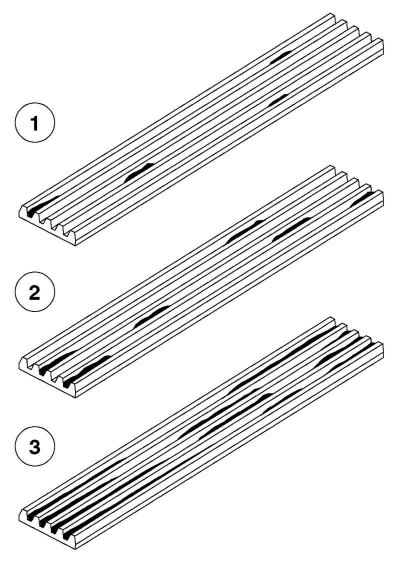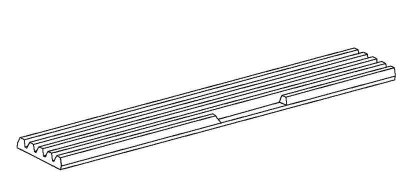Drive Inspection and Testing
Visually inspect for obvious signs of mechanical damage.
Up to 15 cracks are allowed on the edge of the belt at a distance of 100 mm. If the cracks are over the limit or if any belt fragments are missing, install a new accessory belt.
Attention! Do not lubricate the accessory drive belt, its tensioner, or idler pulley (s), because this may cause damage to the material structure of the drive belt, belt tensioner damping mechanism, tensioner pulley bearing and idler pulley bearing (ov).
Small scattered deposits of crumb rubber are not indicative of belt failure and therefore a new accessory drive belt should not be installed.
Extended deposits of rubber crumb, occupying up to 50% of the height of the rib of the drive belt of mounted units, also do not indicate a malfunction, but this may be the cause of increased noise. If increased noise is present, install a new accessory drive belt.
Large deposits of crumb rubber along the grooves indicate a malfunction, this may cause increased noise and instability of the drive belt. If large deposits or excessive belt noise are evident, install a new accessory drive belt.
Check the belt for cracks. If the amount of damage exceeds the allowable limit, install a new accessory drive belt.

Pic. 2.13. Types of damage to the drive belt of mounted units
Check the belt for damage. If there are no large fragments of the belt, install a new accessory drive belt (pic. 2.13).

Pic. 2.14. Absence of large fragments of the attachment drive belt
